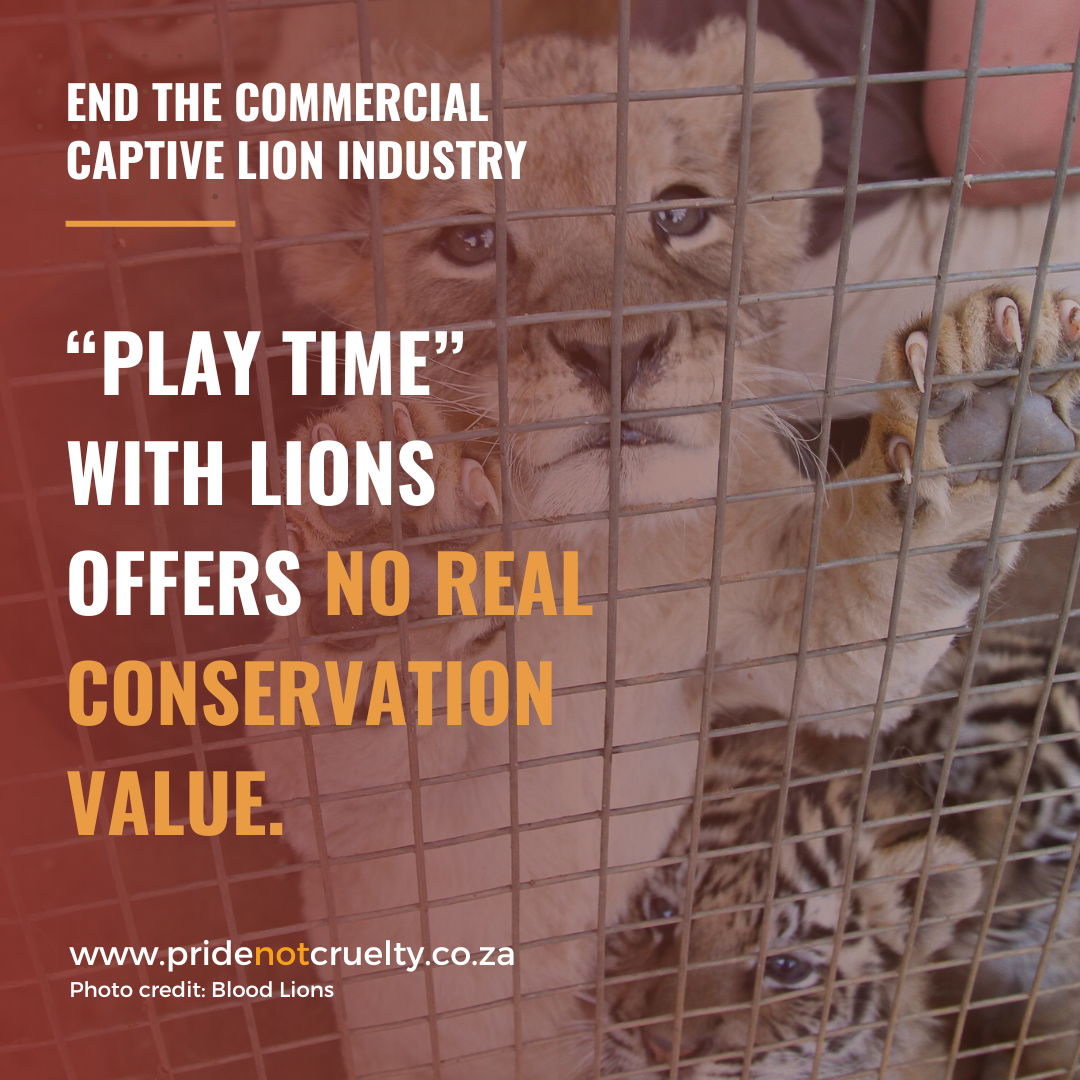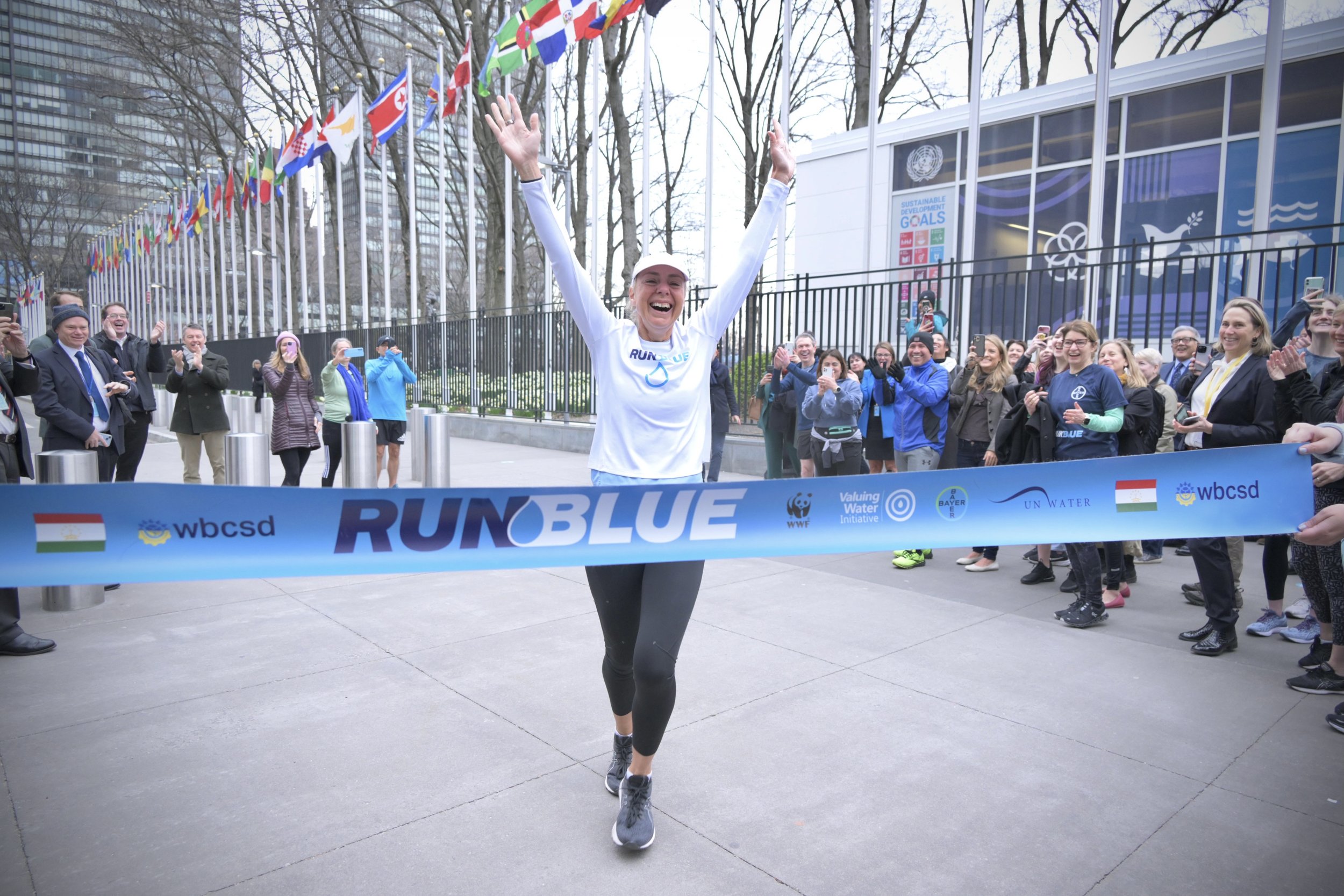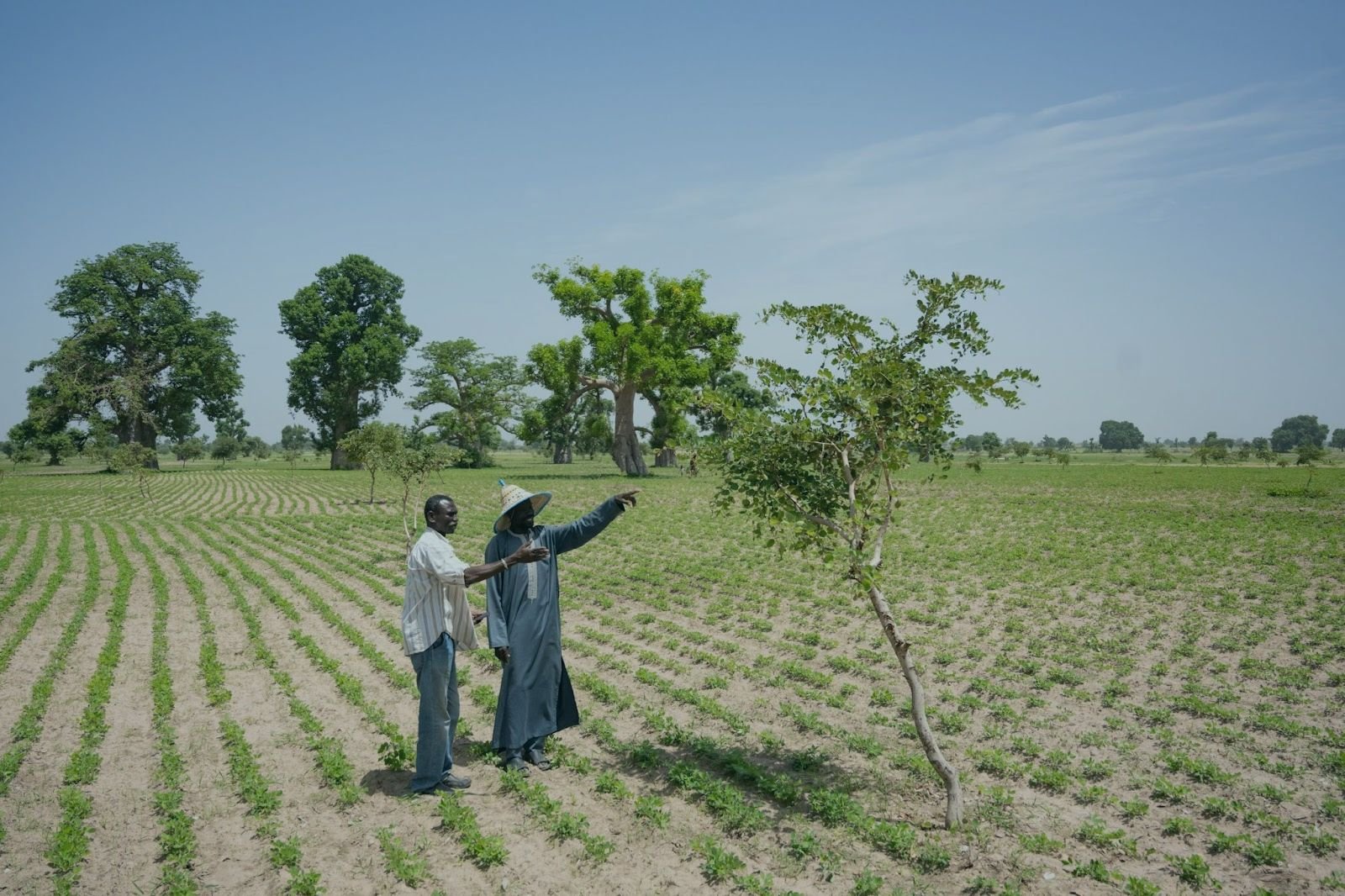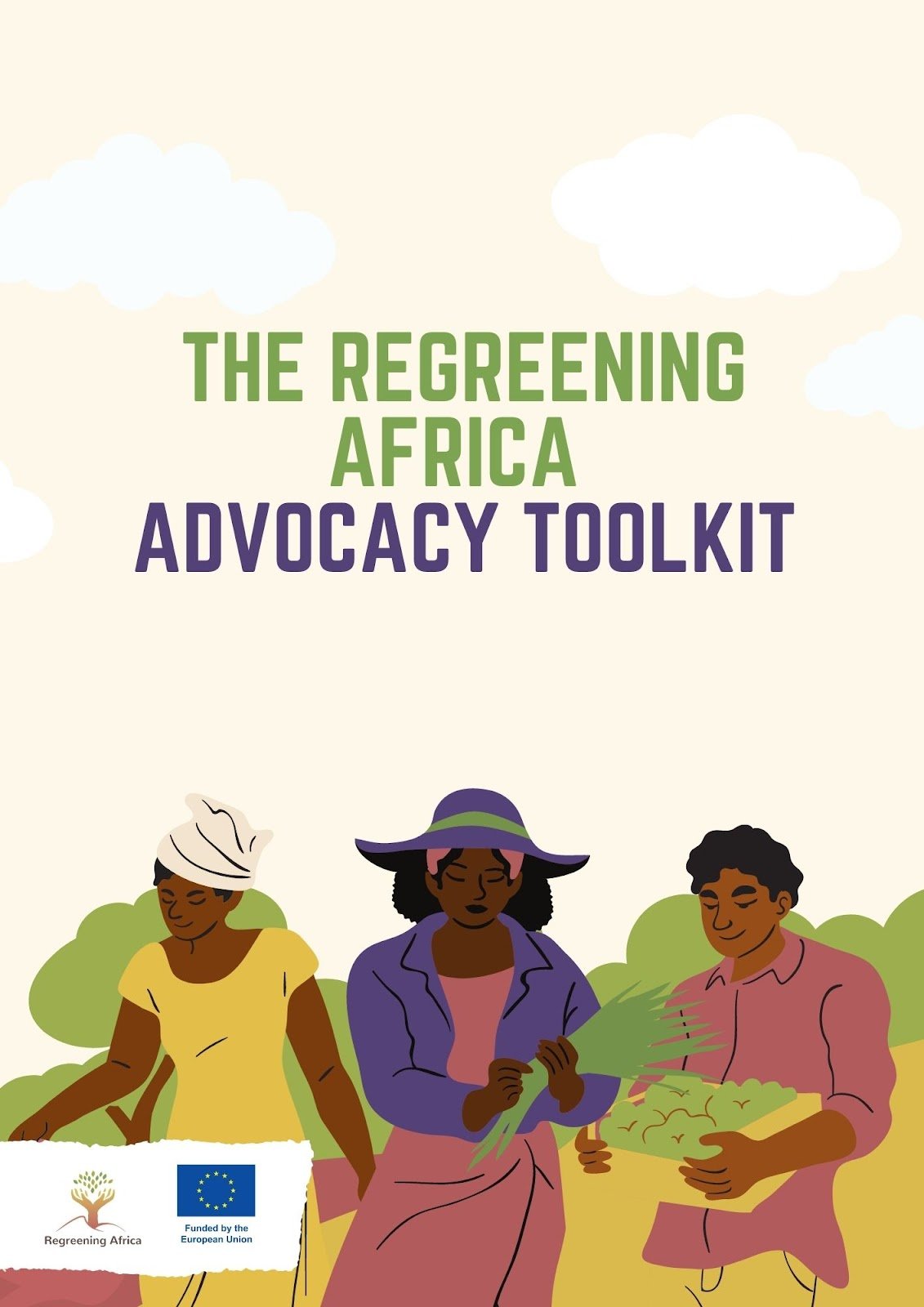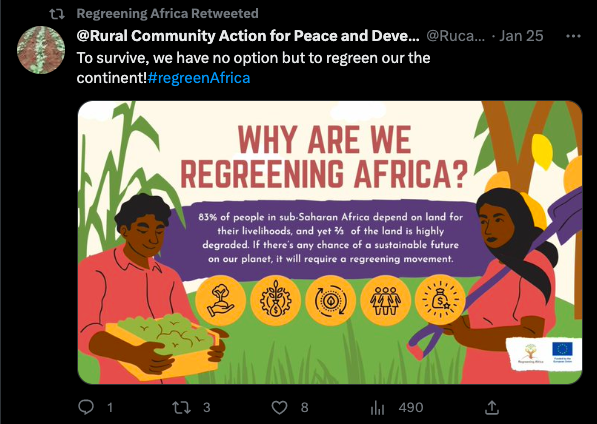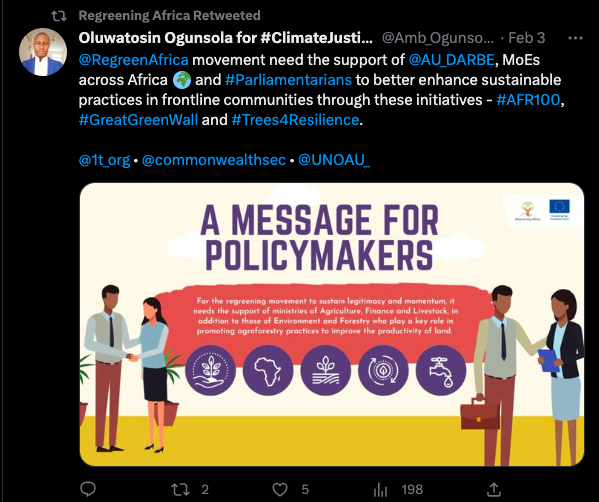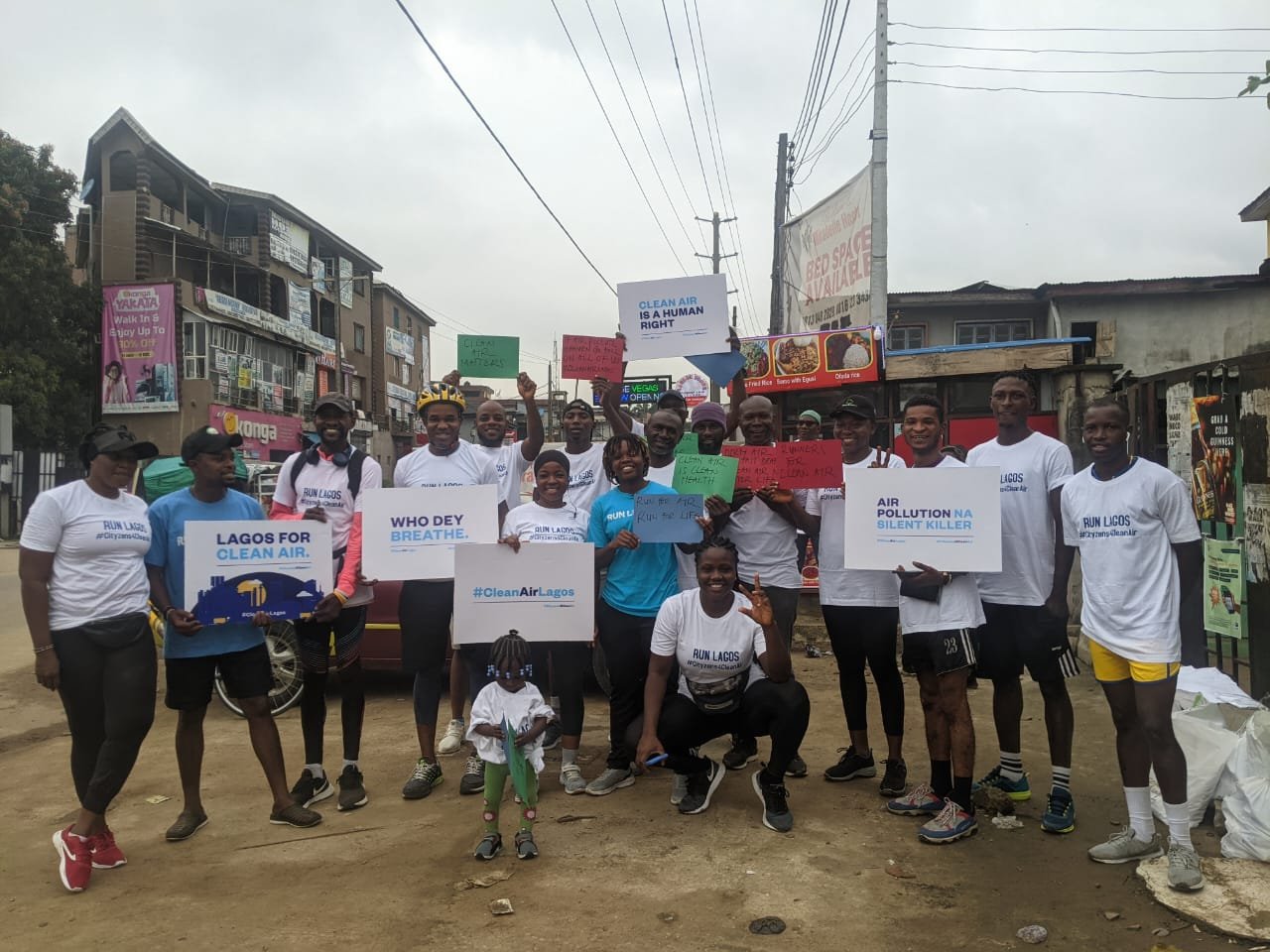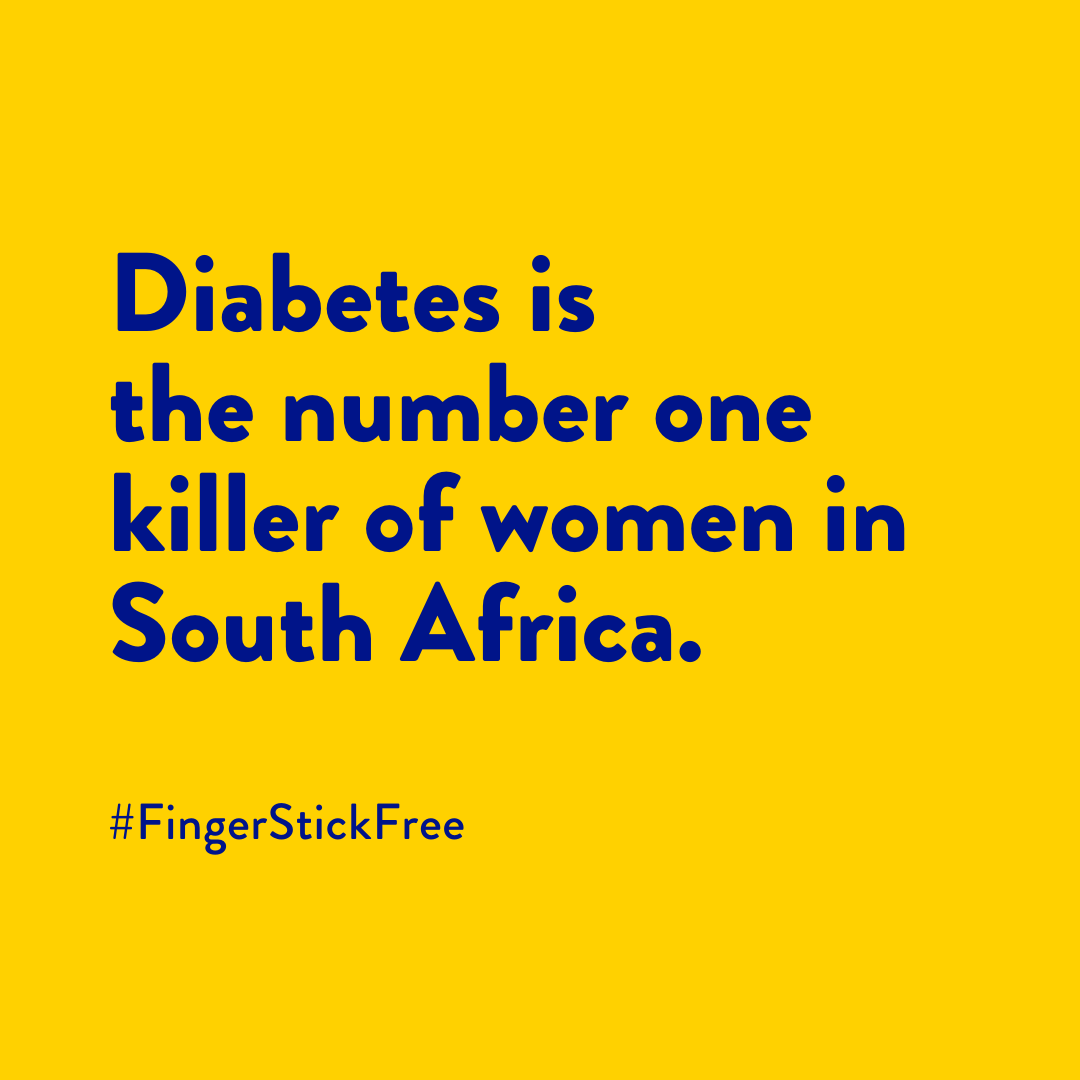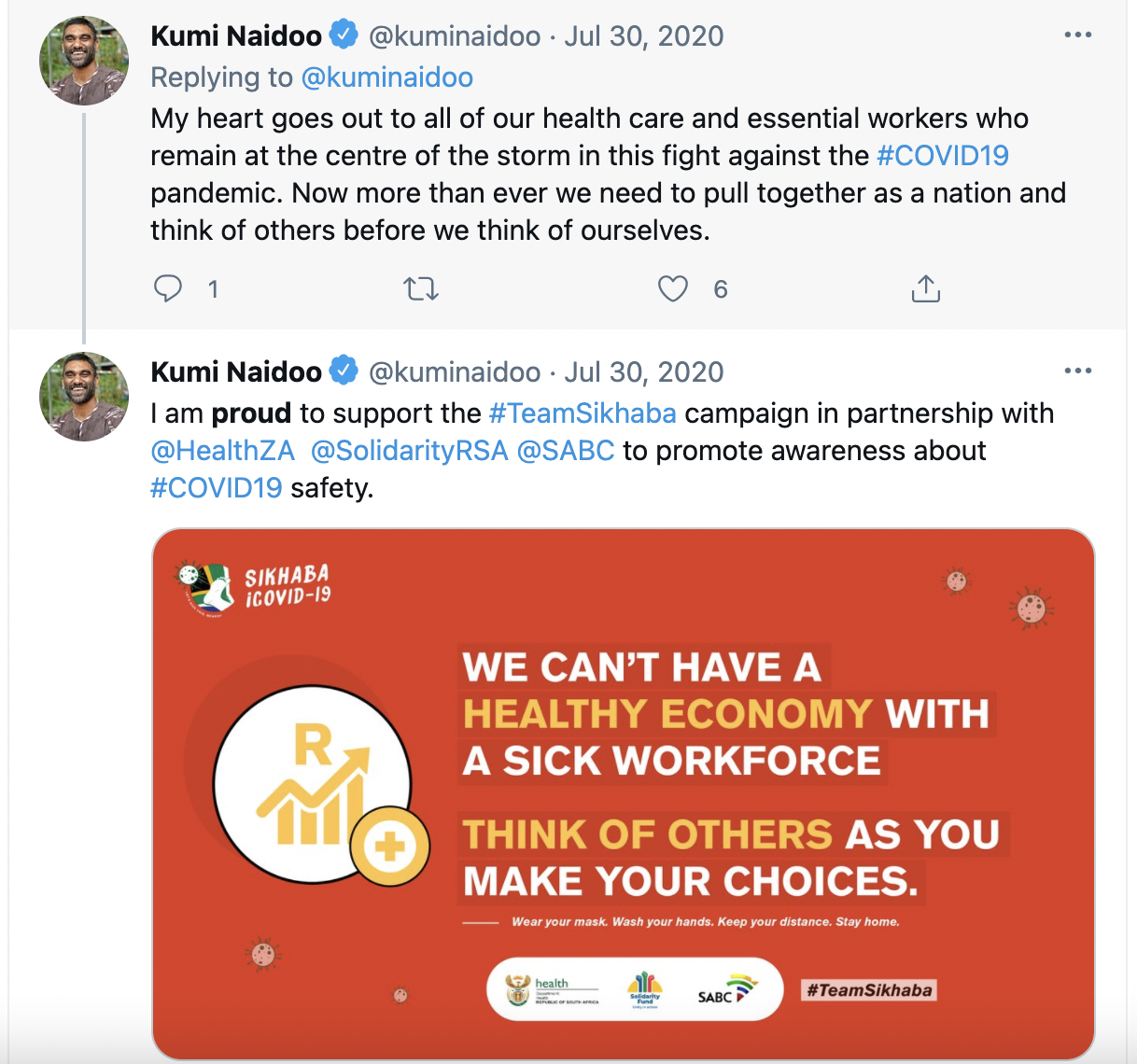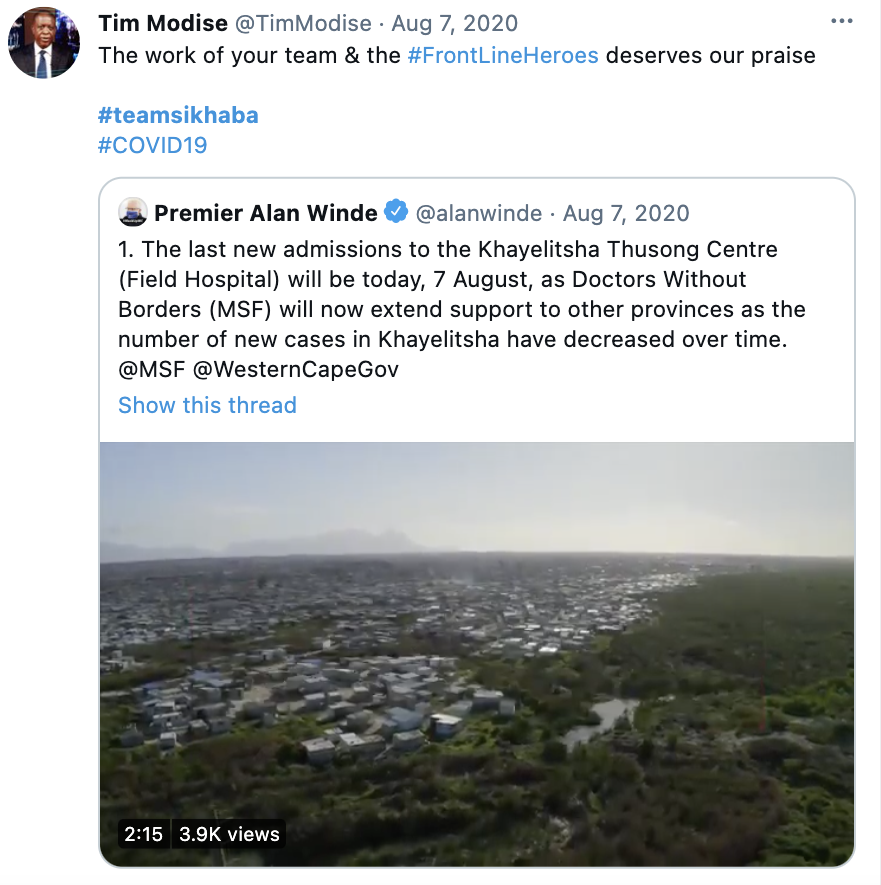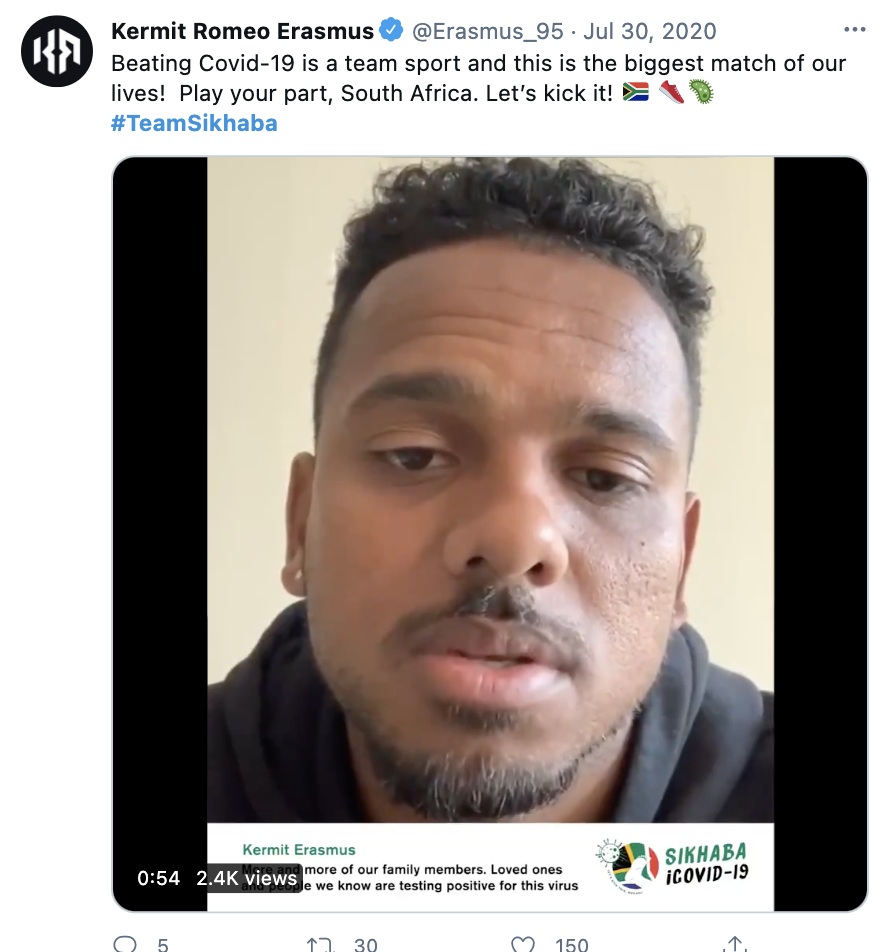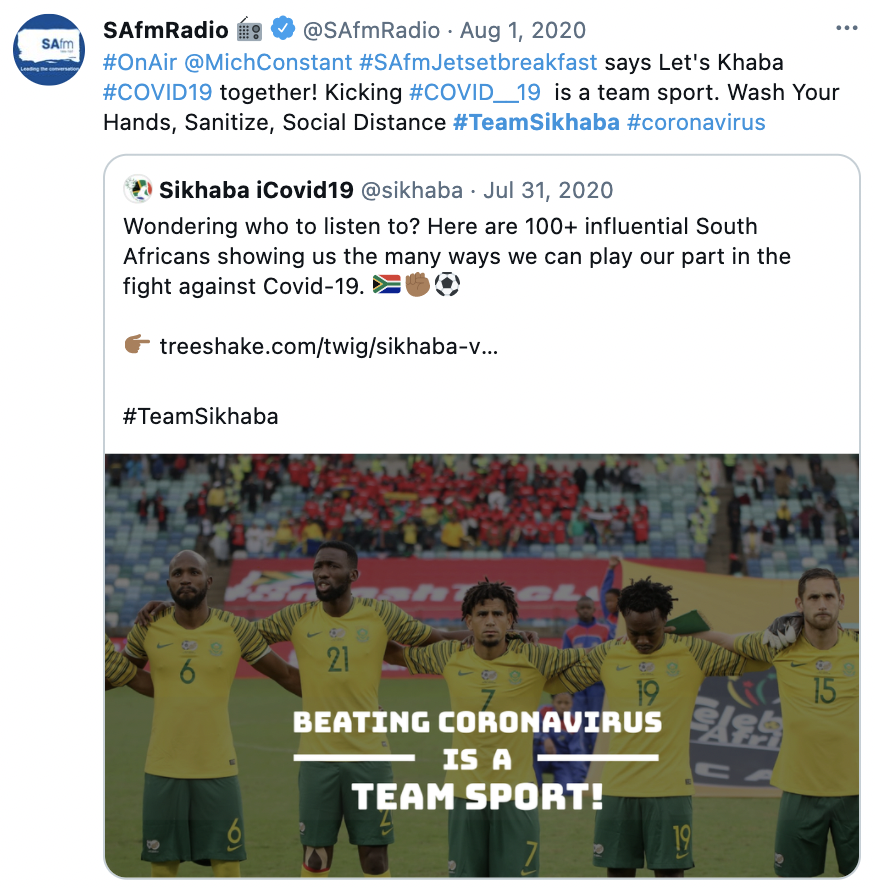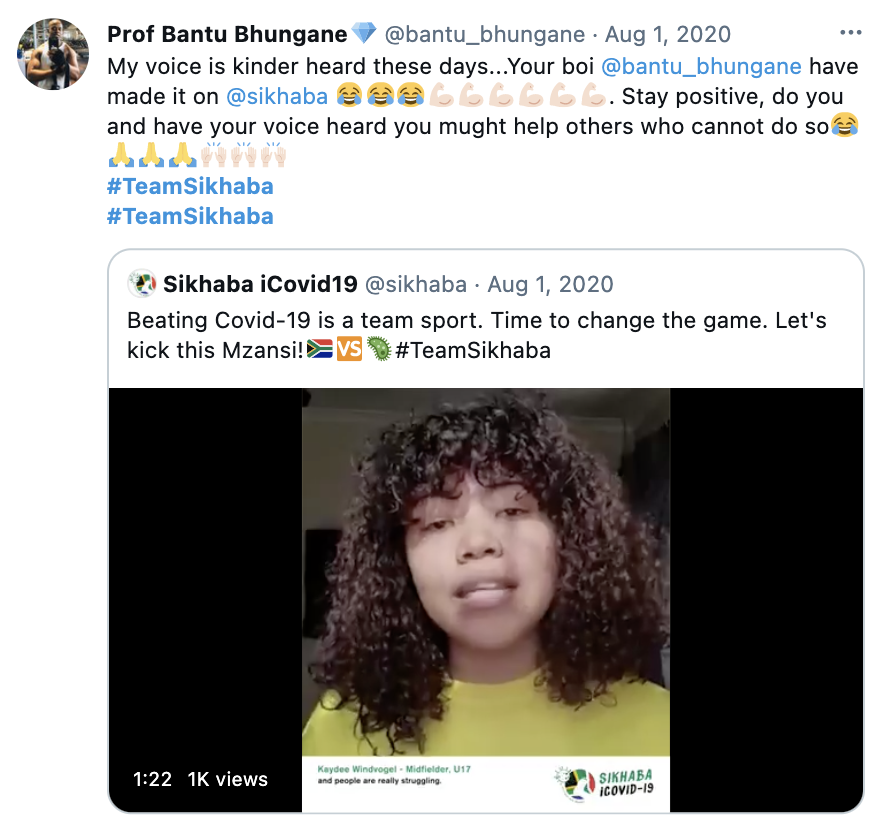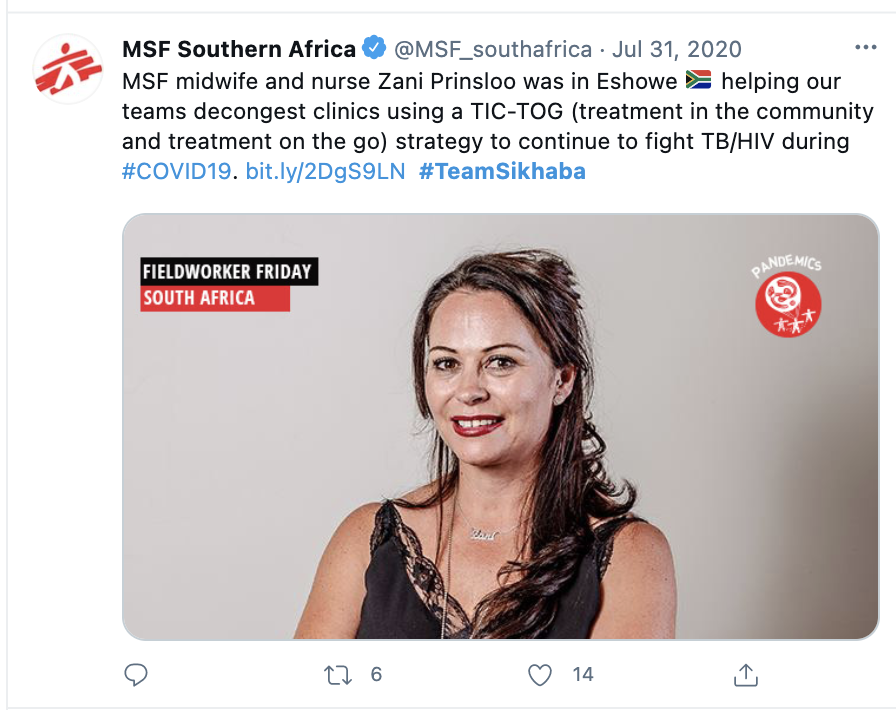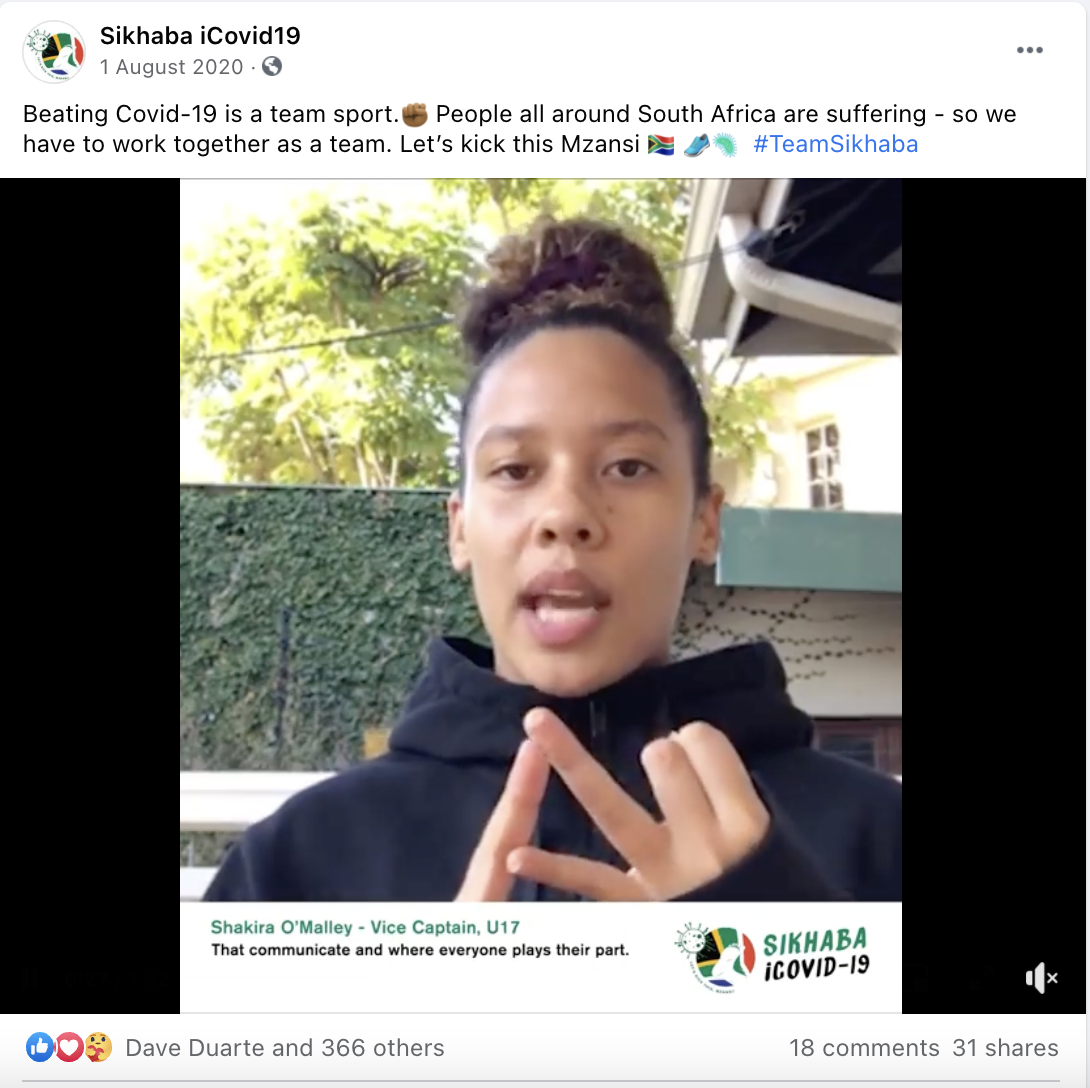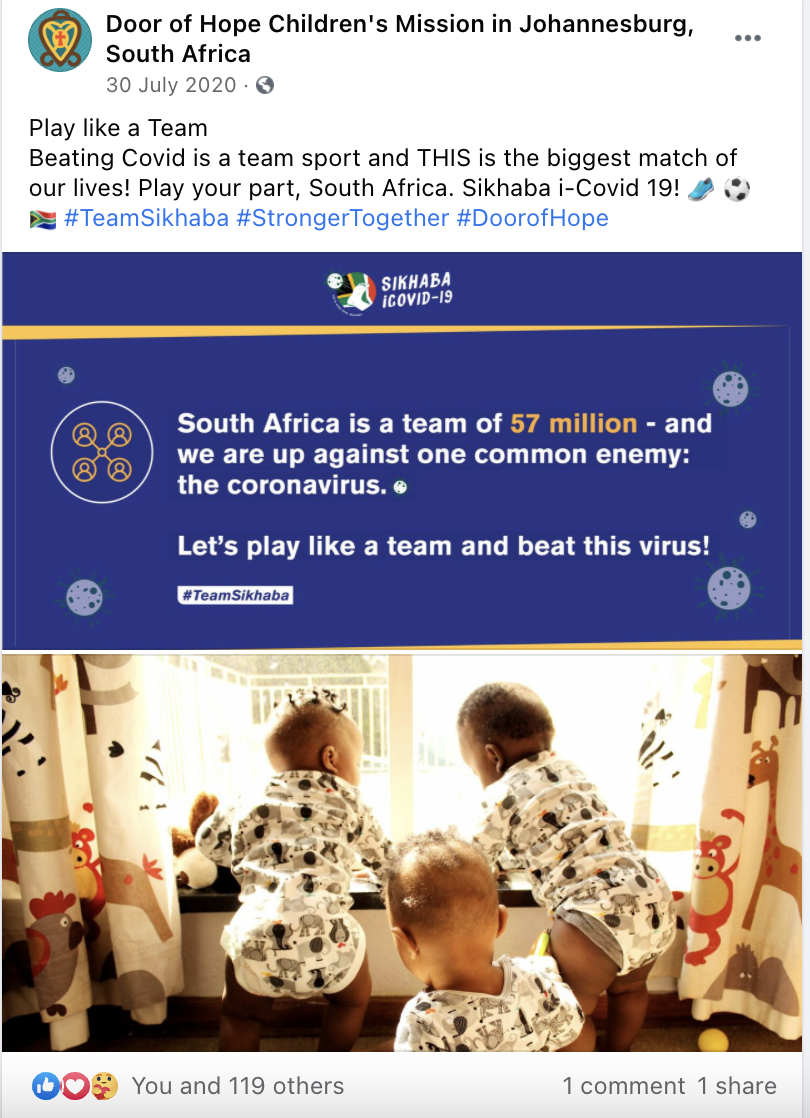Etana Energy: Powering SA Business with Clean Energy Through the Grid
Etana Energy partners with Independent Power Producers to supply renewable energy via wheeling, energizing South Africa’s economy, saving businesses money, and meeting usage targets.
As one of 5 private companies licensed to wheel renewable energy directly to medium and large-scale industrial users, Etana Energy is helping energise the South African economy.
They’re saving businesses money, ensuring they meet renewable energy usage targets, and helping the South African industry remain internationally competitive. We jumped at the opportunity to collaborate with a forward-thinking client like Etana Energy, a leading electricity trader in South Africa.
Etana partners with Independent Power Producers (IPPs) by sourcing renewable energy from wind and solar farms nationwide and then supplying it through the grid via a process called wheeling.
Primary Objective and Strategy
Our primary objective lay in ensuring that all marketing initiatives are directly aligned with the primary goal of reaching and influencing key decision-makers. For Etana, this means crafting campaigns that specifically appeal to C-suite executives and other influential stakeholders in the energy and business sectors, ultimately leading to faster engagement and shorter sales cycles.
Our PR strategy for Etana gained significant traction once we involved individuals with established relationships in business and energy-focused publications. Their ability to navigate and leverage these connections was instrumental in securing high-profile coverage that bolstered Etana’s credibility and visibility in the market.
Featured in these publications and more, is a detailed account of some of the remarkable projects Etana has spearheaded recently:
Secured a renewable power deal with Autocast SA, the first contract with 30+ major industrial users in Nelson Mandela Bay.
Facilitated Cape Town's first wheeling project with Growthpoint Properties and the City of Cape Town in a landmark wind-hydro-solar PPA.
V&A Waterfront signed a 43 GWh/year PPA with Etana Energy.
Petra Diamonds signed long-term PPAs for renewable energy at Cullinan and Finsch Diamond Mines.
Brand Strategy
Following this, we knew we had to support the primary objective through the establishment of Etana as the market leader in the renewable energy space. To achieve this, we focused on building a strong brand presence, producing thought leadership content, and executing a PR strategy that emphasizes Etana’s expertise and reliability. We are proud to have re-designed Etana Energy's new website that showcases the high-impact nature work they are doing in the renewable energy sector.
This multi-faceted approach not only supports the primary objective but also reinforces Etana’s market position, ensuring that when decision-makers encounter the brand, they recognize its authority and value.
Key Learning: Specialised Expertise Enhances Quality
When dealing with a highly technical client or project, enlisting a specialist with deep industry knowledge can elevate the quality of deliverables. For Etana Energy, contracting a renewable energy expert for content creation significantly improved the relevance and accuracy of our messaging. This approach ensured that our articles, social media content, and executive profiles resonated with the target audience, making the content not only informative but also impactful. The ability to adapt and refine marketing strategies based on real-time feedback and results was another key learning.
We also know and understand the value and impact of identifying and engaging with the right stakeholders in B2B marketing. Understanding this, we employed a detailed stakeholder mapping process that allowed us to concentrate our efforts on the most influential decision-makers within target organisations. This strategic targeting was key to driving higher engagement and converting leads into contracts more effectively.
This is just the begining of what we are certain will be a fruitful and impactful partnership that will drive meaningful change and make a positive impact on the world. Together, we are not just changing the energy landscape of South Africa; we are setting a new standard for renewable energy solutions globally.
TREESHAKE TEAM
Strategist & Advisor: Dave Duarte
Creative Director: Chris Roets
Technical Lead: Max Kaizen
Design: Franci Weiner & Emma Ferns
Community: Phumelele Mbatha
PRIDE NOT CRUELTY: A ROAR FOR CAPTIVE LIONS IN SOUTH AFRICA
We helped World Animal Protection and Blood Lions mobilize public support, generating 39 media mentions and securing Cabinet approval to end commercial captive lion breeding in South Africa.
South Africa's lions, a symbol of national pride, have long faced a harsh reality - exploitation in commercial captive breeding facilities. Confined to unnatural environments, subjected to inadequate care, and ultimately destined for a life of entertainment or worse, these magnificent creatures suffer immensely. In 2023, World Animal Protection, Blood Lions, and Treeshake joined forces to launch the #PrideNotCruelty campaign, determined to end this cruel practice.
800 VOICES FOR 800 LIONS
The #PrideNotCruelty builds on the foundations of #800Lions, a campaign that started in 2020 by Blood Lions, World Animal Protection, and Treeshake, “to mobilise supporters and put pressure on the South African Government to continue setting a zero CITES lion bone export quota” (Blood Lions).
The campaign inspired the public to raise their voices for lions by creating lion-inspired art, whether this be drawing, painting, photography, music, poetry, or dance. While the aim was to reach 800 pieces of art, representing the quota of 800 lion skeletons South Africa exported every year for use in traditional medicine, we received nearly 1 300 art submissions, indicating overwhelming support from the public.
These artworks were submitted to Minister Barbara Creecy in the lead up to the G20 Summit, urging her to decide against a continuation of the legal trade in big cat bones and body parts (Blood Lions).
The PROBLEM: LIONS TRAPPED IN A CYCLE OF EXPLOITATION
In South Africa, there are an estimated 8,000 - 10,000 lions suffering in captivity on commercial lion breeding farms and only about 3,500 living in the wild. Confined to cramped enclosures, they endure inadequate living conditions, poor diets, and a lack of enrichment. This not only compromises their physical well-being but also inflicts deep psychological scars. Behaviours like pacing, self-mutilation, and lethargy become a tragic reflection of their captivity.
Photo credit: World Animal Protection
This exploitative industry not only disregards animal welfare but also perpetuates a misleading narrative. Canned hunting, where captive-bred lions are hunted in fenced enclosures, offers a pale imitation of a genuine conservation effort. Breeding facilities often claim to contribute to conservation by reintroducing lions to the wild, a practice doused in controversy with limited success. To this extent, allowing the commercial captive lion industry to continue could also damage Brand South Africa and negatively affect our tourism, our economy, and our people.
THE ASK: A CALL FOR A MANDATORY PHASE-OUT
The #PrideNotCruelty campaign had a clear and urgent ask: to urge the South African government, specifically Minister Barbara Creecy of the Department of Forestry, Fisheries and the Environment (DFFE), to uphold her 2021 commitment. This commitment involved transitioning from a voluntary exit programme for captive lion breeders to a mandatory phase-out of the entire industry.
We recognised the progress made by Minister Creecy's initial announcement. However, a voluntary system left room for exploitation to continue. A mandatory phase-out would ensure a definitive end to this cruel practice.
THE ACTION: A MULTI-FACETED APPROACH TO CHANGE
At the heart of the #PrideNotCruelty campaign was a strategic mix of tactics to raise awareness and mobilise supporters. Here’s a closer look at the key elements:
Celebrity and Influencer outreach
A key component of advocacy is people. To turn the #PrideNotCruelty campaign into a movement and to encourage Minister Creecy to recommit to her 2021 promise, we needed to increase the number of people speaking out about the problem. To do this, we enlisted the help of key South African influencers, Farirai Sanyika - or Fari as she is fondly known by friends - the voice behind GoPhari, a blog and travel company for solo travellers, as well as 12-year-old eco-activist Romario Valentine. By leveraging their social networks, these prominent voices were able to reach a much wider audience, ultimately helping to spread the message of the campaign, and encouraging people to join the movement.
Advocacy toolkit
To empower individuals to become active participants and spread awareness of the realities of commercial captive lion breeding, we developed an advocacy toolkit, a set of researched, peer-reviewed and vetted resources. It comprises three powerful curated talking points (10, 000 Lions in Captivity, Exploited at Every Stage of Life, and Legal vs Illegal), each with their own graphics and call-to-action messages. The toolkit is a ready-made social media campaign available on the PrideNotCruelty website that users can just share on their profiles and other online platforms.
Free Your Creativity for Captive Lions
In another #PrideNotCruelty activation, we called on the creative people of South Africa. From 1-10 August 2023, the "Free Your Creativity" campaign empowered creative South Africans to express solidarity and compassion for these iconic apex predators through art. Drawing, sculpting, dancing, poetry, photography or any other form of artistic expression, to become a powerful tool for advocacy. Each creative expression became a call for change, a stride towards a South African future without lions in captivity.
THE IMPACT: A ROAR HEARD ACROSS SOUTH AFRICA
The #PrideNotCruelty campaign generated a phenomenal response:
Media Attention: The campaign garnered 39 media mentions, propelling the issue into the national spotlight.
Public Engagement: Over 15,000 online interactions were recorded, highlighting the widespread public support for ending the commercial captive lion breeding industry.
Creative Expression: The "Free Your Creativity" call to action yielded a powerful collection of artwork. These artistic expressions served as a powerful symbol of solidarity presented to Minister Creecy.
Public Activations: Six public activations were held, including screenings of the documentary "Blood Lions," live panel discussions, and creative events like "Lion's Head on Lion Day'' and "Draw with Marti Macfly." These events fostered a sense of community and collective action.
Department Taking a Stand: For the first time, the Department of Forestry, Fisheries and the Environment posted publicly about the cause. Although, it was taken down 2 hours later, it was a win for the campaign.
Post credit: Department of Forestry, Fisheries and the Environment
A VICTORY FOR LIONS
Cabinet has approved a Policy Position to end the captive breeding of lions. This policy is the result of nearly a decade of inquiries, reports, a parliamentary colloquium, and a global effort by NGOs to raise public awareness and support for the ban. It details “eight voluntary exit options for captive lion breeders, which includes two mandatory prerequisites. The report notes that these voluntary exit options should only be the first step in the longer-term government objectives of ultimately closing the commercial captive lion industry in South Africa” (Blood Lions).
The adoption of the Policy Position aligns with the release of a draft Biodiversity Economy Strategy by the Environment Department. This strategy proposes a significant expansion of conservation areas, known as mega living conservation landscapes, from 20 million hectares to 34 million hectares by 2040. This ambitious goal represents an area equivalent to seven Kruger National Parks.
We're honoured to have played a part in the #PrideNotCruelty campaign, supporting this change. While there's still work ahead on finalising the implementation plan, this phased approach marks a significant step forward. We commend the Ministerial Task Team for their efforts, and we eagerly await the details of this crucial next chapter. For updates on the progress, follow Blood Lions on Instagram, Facebook, and X.
TREESHAKE TEAM
Advocacy & Impact Strategy: Dave Duarte
Campaign Director: Cordène Midgley
Mobilisation Lead: Elaine Rumboll
Content Strategist & Copywriter: Sigrid Kenmuir
Design: Amy Staak, Emma Ferns
Social Media: Emma Ferns
Paid Media: Aisha Isaacs
Technical Lead & UX: Schalk van der Merwe
Campaign & Community Coordinator: Megan Damon
PR & Influencers: Vukosi Mnisi
Run Blue: Getting People Around the World to Step Up for Water
We helped Mina Guli, an ultra-endurance runner and water advocate, build an on-the-ground community for water in 202 countries and territories.
We helped Mina Guli, an ultra-endurance runner and water advocate, build an on-the-ground community for water in 202 countries and territories.
In March 2022 in Uluru, Australia water advocate and runner, Mina Guli woke in the wee hours of the morning, laced up her shoes, put on a headlamp and set out on Marathon 1 of what was to be a 200 Marathon journey in one year across 32 countries finishing at the UN Water Conference in NYC in March 2023.
What she (and we) were to experience and learn, was astounding and made an even stronger case for action, at the highest levels, for access to water across the globe.
The #RunBlue campaign aimed to put water at the top of the global agenda by inspiring meaningful action on water from companies and people.
During the year, we organised community virtual running and walking activations which ensured that Mina had a global community alongside her, so she was able to bring their voices to the conference in NYC.
In each country Mina visited she met with local people who are facing water pressures, or who have solutions to the water crisis, over 40 mini-documentaries were created to share these stories and highlight issues on the ground.
Throughout the campaign, in between running! Mina gave several keynote addresses (including at COP27, Dushanbe Water Process, Davos and UN Water Conference) and media interviews to ensure that the message was top of mind.
The Challenge
From a communication and organisational point of view, the main challenge was unpacking how to sustain interest in a campaign and a topic for an entire year. It’s a long time to keep a community engaged and involved. In this case - it really was a Marathon and not a sprint.
Just like running 200 Marathons, campaign endurance requires discipline, a lot of planning and an understanding that things can change at any moment.
Plan. Pivot. Plan. Adapt. Plan….this was the ebb and flow of the campaign, we needed to be fit, and clear thinking and seamless adaptation helped us maintain our rhythm.
The Solution
It may surprise some, but a supportive global community is created by design: unique virtual activations, strategic thought leader outreach and well-crafted social media updates meant that we were able to sustain interest and indeed grow the movement.
Video and photo production teams on the ground captured stories and the sights and sounds of the expedition. We made sure that these mini-documentaries constantly fed our socials and educated our community.
Gather people on the ground. Use direct outreach (emails, social DMs, WhatsApp) to people to get them involved in some capacity, by telling their communities about the activations or organising community runs themselves.
Get key opinion leaders involved - don’t be too proud to ask for help.
In the final #WorldWaterRun activation which coincided with Marathon 200 in NYC, we enlisted the help of heavy hitters like the GOAT Eliud Kipchoge who endorsed the event and encouraged their communities to sign up.
A partnership with leading water technology company, Xylem, secured in the process of the campaign led to two breakthrough opportunities to drive signups. Mina was given the opportunity to speak about the World Water Run at Yankee Stadium in front of thousands of fans; and a very special call for involvement from Pep Guardiola and Man City Football Club.
Building a Truly Global Movement
Mina Guli and the Thirst Foundation are building a truly global movement for water.
In our final Run Blue activation, the World Water Run, people in 196 countries signed up, along with major organisations, civil society organisations, non-profits, and leading voices for water around the world.
Run Blue also delivered on the mission of making water more visible, urgent, and accessible.
We achieved 4,3 billion media impressions (Critical Mention); 771 million social media impressions (Keyhole). And an online reach of 560 million (Brand24). Conservatively, the AVE (Advertising Value Equivalent) of this was easily over $70m (Brand24 + Critical Mention).
On social media, most of this was driven by the use of the hashtags we created in the various global support activations, like #Sweat4Soap. However, Mina also gained over 100k social media followers along the way (Twitter, Facebook, Strava, LinkedIn, and Instagram).
The campaign is over, but lives on. Mina and Thirst have not only leveled up in brand recognition, but also have a global network of people, organisations, and supporters who are now poised to take substantial action to improve local water management. There is also a spectacular library of as-yet-unreleased footage that will enable continued storytelling about the global water crisis.
You can follow Mina on Facebook, Twitter, Instagram, LinkedIn and YouTube.
Our team and the #RunBlue community learned about some of the major issues:
Access to water is not democratic, some communities are still having to walk for days to get water
The commodification of water is dividing communities and, in places, penalising the less fortunate
The impacts of deforestation in massive water towers like the Amazon will be difficult to recover from.
There is hope however, thankfully there are innovative solutions that are being implemented across the globe and people who care enough to make an impact.
Treeshake Team
Strategy: Dave Duarte
Campaign and Content Director: Melissa Attree
Content & Community Management: Megan Damon, Vukosi Mnisi
Art Direction: Alez Odendaal
Design: Robyn De Villiers
Community Management: Phumelele Mbatha, Thameena Dhansay, Kirsten de Klerk, Emma Ferns
Mobilization & Outreach Management: Elaine Rumboll
Technical Lead: Schalk van der Merwe
Mina Guli completes Marathon 200/200 outside the UN in NYC.
Photo credit: Kelvin Trautman
Regreening Africa: Growing a Land Restoration Movement in Sub-Saharan Africa
Regreening Africa, backed by the EU, restores one million acres of degraded land in Sub-Saharan Africa, integrating trees to boost soil fertility and farmers' livelihoods.
Land is life. Fertile land and soil is the basis of healthy ecosystems, and productive farming and thriving local communities.
Regreening Africa, a large scale project backed by the European Union and implemented by the World Agroforestry Centre (ICRAF), aims to restore degraded land in Sub-Saharan Africa by integrating trees into land management across Kenya, Senegal, Rwanda, Ghana, Ethiopia, Mali, Niger, and Somalia.
The first phase of this epic project, which concluded in February 2023, aimed to restore 1 million acres of degraded land, while working with thousands of farmers to help them integrate trees that would enhance soil fertility, increase crop yields, and help sustain their livelihoods.
As the project concluded, Treeshake was tasked with telling their story, engaging their community of stakeholders, and helping lay the groundwork for continued application of the work through the local country partners.
Results
Contributing to the UN’s inspiring Great Green Wall initiative (https://www.unccd.int/our-work/ggwi) to restore 100 million hectares of currently degraded land; sequester 250 million tons of carbon and create 10 million green jobs by 2030.
What is Land Degradation
Degraded land refers to land that has lost its natural productivity due to human activities such as deforestation, overgrazing, intensive agriculture, and unsustainable land use practices. As a result, the land becomes less fertile, loses its ability to retain water, and is more susceptible to erosion, desertification, and other forms of land degradation. This can lead to reduced agricultural yields, food insecurity, and increased poverty for the people who rely on the land for their livelihoods.
Degraded land can also have negative environmental impacts, such as reduced biodiversity, increased greenhouse gas emissions, and decreased carbon sequestration. This can exacerbate the effects of climate change and further undermine the resilience of local communities and ecosystems.
Land Degradation in Southern Africa
Land degradation is a global issue affecting many regions, but sub-Saharan Africa is one of the most severely affected regions. The problem is particularly acute in this region due to a combination of factors, including high population growth rates, low agricultural productivity, limited access to modern technologies, and climate change impacts such as drought and desertification.
In addition, many countries in sub-Saharan Africa have experienced rapid deforestation, overgrazing, and other forms of unsustainable land use practices due to factors such as population pressure, poverty, and weak governance. This has exacerbated the problem of land degradation in the region.
While other regions of the world also face land degradation challenges, the severity and scale of the problem in sub-Saharan Africa make it one of the most affected regions. As such, efforts to address the issue in this region are critical to achieving global sustainable development goals.
Story
Excellent storytelling is imperative to an advocacy campaign’s success so the first step was setting the narrative. Science communication, however, is notoriously difficult and requires a high degree of accuracy. Additionally, Regreening Africa is a complex project, running in varying levels of specificity across 7 different countries using multiple languages. So, how did we distil these insights and turn them into a narrative that was compelling enough for people to talk and get excited about?
The Regreening Africa Journey, a social video showcasing the project’s objectives and targets, sets the project narrative by unpacking the 5ws and H of the project, and emphasising why land restoration is especially crucial. The video was produced using footage renowned photographer Kelvin Trautman had taken with the Regreening Africa communities in Rwanda, Senegal, Ghana and other participating countries. Commissioned by Treeshake to sharpen the quality of the project’s visual outputs, Kelvin shot beautiful imagery of the teams, farmers and community members at work, as well as the landscapes in various stages of restoration, which is now used across the project’s various platforms.
People
A second key component of advocacy is people. To turn Regreening Africa into a movement, we needed to increase the number of people speaking about the project. We needed to inspire and enable advocacy. We needed to broaden the take-up of the message and equip other organisations and stakeholders to speak about the wonderful work, the impact, and the lessons.
Relationships are a critical part of the landscape restoration process and the project owes much of its success to the involvement of local communities and partners in formulating restoration strategies and data collection and analysis. Knowing this, we kicked off our advocacy strategy by activating relationships with our stakeholders - strengthening those that already exist and being on the lookout for new alignments. We did this with stakeholder mapping exercises such as list-building, tagging our supporters and partners in our content and creating content around them —making them an even more active part of the regreening story and further creating a community around the project.
For example, Regreening Heroes is a showcase of 24 individuals and 8 organisations that Regreening Africa wanted to celebrate for their passionate contributions to restoring landscapes and improving the lives of communities across Sub-Saharan Africa. Compiled by Sandiso Matshikiza, the list highlights the women, farmers, youth, and partners who are instrumental to the effectiveness of regreening initiatives across the continent and deserve to be celebrated. #RegreeningHeroes has accrued over 73 000 impressions on Twitter to date, engaging the heroes featured and their networks, as well as our existing followers.
ACtion
At the heart of the advocacy strategy was the creation of an advocacy toolkit, a set of resources for people who want to help bring awareness to the issue of land degradation in sub-Saharan Africa. The toolkit highlights the role each of us can play in rehabilitating these landscapes and improving the quality of life for the communities that are dependent on them for their livelihoods. It is comprised of a collection of graphics and call-to-action messages about why we need a regreening movement, with messages directed at policymakers, development partners, faith communities, farmers, and other stakeholders. The toolkit is a ready-made social media campaign that users can just share on their profiles and other online platforms.
To activate the advocacy toolkit, we invited our partners and supporters to a series of Zoom meetings where we shared the toolkit with them and trained them on how to use it effectively. A specific timeframe for them to share the toolkit with their audiences was decided on, and follow ups made post the training, to ensure that everyone was clear on the plan and objective. On the day of activation, we reminded people to post from their platforms, as well as encouraging them to engage with other posts carrying the hashtag #RegreeningAfrica. Below are some examples of some of the posts shared by partners and community members.
The Regreening Africa Summit
To celebrate the culmination of five years of restoring landscapes and livelihoods and to share the impact achieved in those five years, Regreening Africa hosted the Regreening Africa Summit, a virtual event where Regreening Africa community members, farmers and project partners were joined by some notable names in the global impact space, like Acting Director of the European Commission Africa Hans Christian Stausboll, World Vision Australia’s Tony Rinaudo, Christophe Besacier from FAO and Susan Chomba from World Resources Institute.
The goal of the Summit was to unpack insights, lessons, and achievements from the programme, as well as the way forward for the project and landscape restoration on the continent in general. Through a social media and stakeholder outreach strategy, with beautiful graphics by Amy Staark, we managed to get over 1500 signups for the event, with just over 550 online attendees on the actual day of the Summit. Online, conversation around the Summit was buzzing too, with a Twitter reach of over 200 000 impressions and nearly 600 engagements in the two hours the event ran.
Regreening Africa is a model for other projects and initiatives that seek to promote sustainable development and improve people's lives, and an effective example of how, through agroecology and other relevant practices, scalable and replicable land restoration is possible. What an honour to work on this project!
Client:
Regreening Africa
In partnership with World Agroforestry and European Union
Treeshake Team
Strategy & Tech: Dave Duarte
Project Management: Sandiso Matshikiza
Content & Community: Mwabi Jere
PR: Aithne Molotsane
Resources:
Advocacy Toolkit: https://regreeningafrica.org/regreening-africa-advocacy-toolkit/
Regreening Africa video: https://youtu.be/1XUyv1PKibg
Regreening Heroes: https://regreeningafrica.org/regreening-heroes/
Recording of RA Summit: https://youtu.be/duMJ4SpaZ28
Cityzens4CleanAir: The Power of Citizen Science in Tackling Air Pollution
UrbanBetter mobilized clean air and public health advocates to organize events across three African countries, gaining policy-maker support, extensive social media reach, and mainstream media coverage.
By engaging young people in data collection and public mobilisation, the Cityzens4CleanAir campaign, led by Urban Better, generated valuable insights into local air quality in Accra, Lagos, and Cape Town, and informed action to improve it.
Air Pollution is a Major Issue - for public health and climate
Climate action can be such a nebulous issue for people to grapple with, but air quality makes it tangible. It’s at the intersection of health and wellbeing. We can tangibly see it, measure it, and explain the personal and community impacts of it. So it’s one of the best ways to get people to notice and take action on climate.
It’s no secret that air pollution impacts health and wellbeing. But working on this issue made us more aware of just how damaging it can be. Breathing polluted air can cause respiratory problems like asthma, bronchitis, and lung cancer, as well as heart disease, stroke, and high blood pressure. Air pollution can also make allergies and asthma worse, impede children’s ability to concentrate, and reduce our life expectancy.
Of course, air pollution also impacts our climate & environment. The same sources of pollution that damage our health also tend to damage the environment and contribute to climate change. But unlike rising sea levels, or fractions of a degree in global warming, this is something that can be tangibly seen and acted on at a local level.
Citizenship in Action
The first step to creating change is to understand the issue. In this case, this was about gathering evidence of air pollution and the causes thereof in particular communities.
-
Citizen science engages the public in the process of collecting and interpreting data, which can increase awareness of air quality issues and empower individuals to take action to address them.
This approach also allows for more localized and targeted monitoring, which can provide a more accurate picture of air quality in specific areas.
-
Decentralized Air Quality monitoring uses portable air quality sensors.
This approach has a number of advantages over installed air quality sensors: it costs less to deploy; it is adaptable to needs; and it can provide more datapoints across a wider area.
This was done by equipping young people with wearable air quality monitors, which they wore while traversing local run routes. If their Air Quality monitor picked up particularly poor air quality in a particular place, then they were asked to look for the source of the pollution.
For example, they might see that the pollution was coming from people burning rubbish on the side of the road. This evidence could then be presented to local municipalities and action could be taken to address the cause.
This specificity is empowering to communities and decision-makers. It takes the conversation from general asks like “reduce air pollution to improve public health” to specifics like “collect trash more frequently in Zone B so that residents don’t have to burn it themselves”.
Data with Personality
The Cityzens4CleanAir campaign demonstrates many of the principles of advocacy that we stand for at Treeshake.
This is not about speaking on behalf of people in communities, it’s about equipping people in communities to discover and speak about their own issues.
It’s uses technology to make a credible point about a relevant issue. Without data, we’re just another group of people with an opinion. With credible data combined with testimony, we can engage policy-makers.
It gets people physically involved in making a difference on the ground, together.
It takes a big issue, air quality, and makes it hyper-local. Highlighting and tackling the complexity of implementation to make tangible recommendations for change.
It combined hard data with photos, videos, and testimony from real people from the affected communities to make the issue of air quality real and relateable. This is the essence of storymaking.
Involving a small group of well trained advocates will provide better traction for an emerging movement than simply blasting out messaging to lots of people who aren't as deeply engaged.
Key Results
Through our small groups of dedicated group leaders in each city, we were able to organise dozens of events in three cities; gain the support of policy-makers; and secure mainstream media coverage.
Around 300 people participated in the data gathering runs in Lagos, Cape Town, and Accra between September and November 2022. This included prominent figures like Cape Town Mayor Geordin Gwyn Hill-Lewis, and Lagos State Health Commissioner Akin Abayomi.
Our advocacy toolkit made it easier for our “cityzens” to help spread the message online, using the hashtag #Cityzens4CleanAir, as well as #CleanAirAccra, #CleanAirCapeTown, or #CleanAirLagos. This helped push the campaign's organic online reach to over 2.5 million people. Notable supporters on social media included WHO Director of the Public Health Maria Neira; president of the Youth Envoy for COP27 Omnia El Omrani; as well as notable climate solutions platform We Don't Have Time.
We got 28 pieces of mainstream media coverage across the continent, including three top tier features on Al Jazeera (with renowned presenter Femi Oke and Maria Figueres, the architect of the Paris Climate Agreement), the BBC, the Guardian, and WEF. This was achieved with precision outreach to individual journalists, with personal follow-ups rather than generalised blasting out of press releases
Finally, the campaign results were presented to influential in-person audiences at the UN’s COP27 meeting in Egypt; and at the World Science Forum in Cape Town. Results were presented by the run leaders themselves, with the support of Dr Tolullah Oni & Dr Monika Kamkuemah of Urban Better.
The Guardian: “A precision approach to activism’: distance runners join fight against Africa’s air pollution”
Explore the Findings from the Project
The report is based on PM2.5 and NO2 air quality data collected by the citizen scientists who participated in the campaign across the various cities. The data used to create this report was generated by a number of low-cost air quality monitoring devices i.e Flow2 by Plume Labs and Airbeam devices which were carried by the citizen scientists during the campaign runs. This was supplemented by data from regulatory monitors operated by the city authorities.
Read More on the UrbanBetter website 🔗
Treeshake Team
Strategy: Dave Duarte
Content & Community: Mwabi Jere
PR: Aithne Molotsane
In partnership with Y-Labs
6 things we’ve learned from the Lewis Pugh Foundation’s social media journey.
Starting from a zero base we have had significant organic growth in reach on the Lewis Pugh Foundation accounts. Here are 6 things that are working for us.
The Lewis Pugh Foundation (LPF) works to preserve and conserve our oceans for a peaceful and sustainable future. A big part of that is ensuring that the foundation brand is top-of-mind among ocean conservationists, funders, and policy makers.
Starting with a zero base, we frequently have individual posts reaching 100k+ organic views and have grown a very loyal and influential community around the account. This has translated directly into meaningful relationships, opportunities and impact for the foundation.
Here are 6 simple learnings from our journey with the Lewis Pugh Foundation’s social media.
6 Learnings from the LPF’s Social Media
Be Educational
Tap Into Trends and Issues
Do a Deep Dive
Make it Easy to Fall in Love
Say it with Video
Celebrate the Community
Let’s explore these in more detail.
1. Be Educational
Beautifully designed educational material performs well on the Lewis Pugh Foundation’s social media accounts. They also age well and can be reused and repurposed into other formats like posters.
2. Tap into trends and issues
To be an authority on a specific topic means that you need to be tapped into the zeitgeist. Being at the forefront of the latest developments, and having an opinion on that, gives you a position of authority and trust - two things that can set you up for social media success.
This is true on significant themes, like when we were one of the first accounts to post about Shell’s seismic blasting off South Africa’s Wild Coast. But it is also true in more straightforward and playful ways, like when we quickly adapted a powerful monologue about ocean animals for TikTok and garnered over a million organic views.
3. Do a deep dive
Step aside, blogpost; the Twitter thread is here! We are increasingly seeing lengthy, well-researched twitter threads that quickly encapsulate or explain complex issues. It’s a winner in terms of time and attention and one we like to use to engage our community.
It’s also a great lesson in using specific features of a platform like Twitter in the most effective way possible. Test and learn; you never know which feature may give you a new opportunity to present your content differently.
4. Make it Easy to Fall in Love
Sometimes we just post images of cute, quirky and wonderful ocean creatures. Why? Because people love this stuff, and we protect what we love. It’s a great way to bring people into the cause.
Everyone likes the cute stuff! Luckily for us, nature gives us so much to work with here.
5. Say it with Video.
We try to produce short and subtitled explainer videos as often as possible. The combination of moving visuals and text helps us convey a lot of information quickly. It’s thumb-stopping content that, importantly, can be viewed sound on or off.
6. Celebrate the Community
When we look at a specific ocean-related conservation theme, such as kelp, we always compile a list of key people doing pioneering work in the field. We follow them, talk to them, and celebrate their accomplishments. This provides access to new information, introductions to other leaders in the field, and an easy way to connect with all the right people when it comes time to push for policy change or raise public awareness about the issue.
Consider our most recent article, 21 Voices for Kelp. The voices on the list do not all have a large or active social media following. Still, because the list was so beautifully curated and the individuals chosen so credible and respected, the list was circulated throughout the kelp community. We have been inundated with nominations for our next list on the topic!
You can read the full, and beautifully compiled article on the LPF website here: Voices for Kelp, and see all the social media chatter we started with the #lovekelp hashtag.
learn more as you follow
Follow the Lewis Pugh Foundation here:
Twitter: https://twitter.com/LewisPughFDN (Bonus: here’s the top performing posts)
Facebook: https://www.facebook.com/lewispughfoundation/
Instagram: https://www.instagram.com/lewispughfdn/
#2030ReadingPanel: GIVING TEACHERS A SAY IN EDUCATIONAL POLICY
How the 2030 Reading Panel emphasised the necessity of including teachers' opinions in education issues and policy.
Working with Dr Phumzile Mlambo-Nguka and Prof Nic Spaul we produced the first sitting of the 2030 Reading Panel. The event ignited a national dialogue foundation phase reading involving key leaders across civile sociey. This is how we obtained 52 pieces of major media coverage, and over 1.3 million social media reach around a conference involving just 80 in-person delegates.
The issue:
In South Africa, 78% of grade 4 children cannot read for meaning in any language.
This astounding statistic requires a solid plan to ensure tangible change takes place. Phumzile Mlambo-Ngcuka, Former deputy president of South Africa and CEO of the Umlambo Foundation, convened the annual '2030 Reading Panel' to bring together respected South African leaders to ask: "What needs to change for us to ensure that all children can read for meaning by age 10 in 2030?"
The panel comprises luminaries from across the spectrum of civil society including retired business people, media personalities, academics, faith leaders and human rights activists, among others. They include Archbishop Thabo Makgoba, Prof Njabulo Ndebele, Elinor Sisulu, Prof Michael Sachs, Bobby Godsell and 14 other distinguished South African leaders.
From 2022 to 2030, the panel will meet annually to motivate the government to move beyond just talking about the importance of early grade reading to acting and making real change.
The challenge:
The 2030 Reading Panel was a brand new initiative, Treeshake’s challenge was to create the brand and help secure the involvement of influential leaders across civil society.
Starting with an excellent concept presented by Prof. Spaull and Dr Mlambo Nguka, the first step was to design the Reading Panel brand look and feel. This would then inform the development of the readingpanel.co.za website and new 2030 Reading Panel social channels.
We were responsible for Public Relations. Our primary asset for this campaign was the high profile support of the panelists themselves. Each individaully onboarded. During the lead up to the inaugural event, we drafted and pitched a press release that gained us, among others, national coverage on ENCA, an Interview with Archbishop Thabo Makgoba and a written piece on news24.
In building the social media following, we created private Twitter lists featuring prominent voices and organisations involved with the issue of Primary Education in South Africa. On the day of launch we made the list live, and followed everyone on our lists. Almost everyone on our lists followed us back, and the word was out! Applications to attend the conference started pouring in.
We organised every detail of the in-person inaugural event; the first sitting of the 2030 Reading Panel. This included inviting the 80 delegates from various sectors, including government, business, philanthropies, NGOs, and the media. We had an extremely high acceptance rate, as well as nominations and requests for invitations for additional imminent leaders and experts.
At the conference we shot short interviews with each of the panelists, sharing what they think needs to change in order to avert a severe reading crisis. These clips were then used to fuel the broader public conversation on social media.
The stories we wanted to tell and the headlines we wanted to see subsequent to the event were based on the release of the Background Report that was presented by the Panel Secretariat, Nic Spaull.
45% of teachers will retire in the next 10 years – this is ‘unprecedented’ and currently, there is no plan to address this wave of retirements.
On SA’s current trajectory it will take 80 years before all 10 year olds can read for meaning
University B.Ed students scored 50% on a primary school maths test: The panel called for an audit of university programs training primary school teachers.
Teachers on Education
In a high level panel about education, one group of people still needed representation: the teachers.
Aithne Molotsane from Treeshake, a former high-school english teacher, was handling the social media and PR for the campaign. She highlighted the importance of including teacher voices directly, rather than simply speaking on their behalf.
This is a crucial insight when it comes to policy formation and issues advocacy. Rather than posing rhetorical questions and answers, we can use the power of virtual media to directly include teachers in the discussion. And that’s exactly what we did.
Perhaps unsurprisingly, the teacher content was some of the best recieved and most engaged on social media. It is also important to underpin the research with testimony.
Noleen Hogins, a remedial teacher, shares her opinion on how to improve reading for meaning.
Twitter engagement following teacher videos
The results
Our first in-person conference production since the first lockdown of 2020 was a great success!
We achieved a social media reach of 1.3M, from a zero base and a brand-new account.
We secured 52 pieces of mainstream media coverage during a two week period following the launch of the panel (R 1 379 652 AVE -Advertising Value Equivalency).
The campaign's success is also evident by how reference is now made to the 2030 Reading Panel in articles timeslive.co.za and education interviews The Globe, SABC News across the country
Over 13K interactions on social media - an extraordinary number for such a new account.
Hundred of NGOs and leaders from civil society have signed up to contribute the work of the Reading Panel
Most importantly, teachers' voices are being included in discussions at the highest levels of educational policy.
#FingerstickFree: Bringing South African Diabetics Together for a Medical Aid Breakthrough
How we used precision advocacy to help Diabetics raise their voices and get access to the life-saving medtech they needed.
We used public activism combined with precision advocacy to help Sweet Life secure a big win for the diabetes community in South Africa: medical aid coverage for wearable glucose sensing technology.
Diabetes is a major public health issue in South Africa. It is the leading cause of death of all people above 60 years of age, and impacts millions of lives. Yet people with this chronic condition can live long and healthy lives. The key is effective diabetes management. That is why the Freestyle Libre, a wearable device that helps keep track of glucose levels, is literally a lifesaver for so many.
Yet in October 2020 the Freestyle Libre, and other flash glucose monitoring devices, were not covered by South African medical aids. We were approached by Abbott and Diabetes Advocacy South Africa to help them do something about this.
#FingerstickFree: Freedom from Finger-Prick Glucose Testing
Flash Glucose Monitoring devices give diabetics real-time information about their glucose levels. This gives them valuable data throughout the day and helps them manage their diabetes more effectively. Before these devices came around, people living with diabetes would have to prick their fingers to draw blood, and use disposable testing strips. This limited the amount of testing they could do because it was painful and inconvenient.
Yet medical aids only covered people living with diabetes for the finger-prick test method. This is old-school, it’s inconvenient, and doesn’t offer users the latest available technology that can literally save their lives.
So in 2020 we partnered with SweetLife, who run South Africa’s largest diabetes Facebook group, to bring their members together with a purpose: we’d call on South African medical aids to go #fingerstickfree.
Medical aid schemes knew about the advantages of flash glucose monitoring (FGM) and continuous glucose monitoring (CGM) for their members, but were delaying making any decisions about whether to pay for these devices. Public support was needed to help create pressure at the medical aids to make a decision.
November is World Diabetes month, so we had a meaningful timeline and challenge: get at least one medical aid to make the decision to support CGM by the end of November.
Our core idea was to get hundreds of people living with diabetes to raise their voices on social media, calling on their medical aids by name. But with limited time and a very diverse community, we needed to ensure that participation was as easy and inclusive as possible.
Our solution was a smart signup form that automatically generated personalised posters for everyone.
A signup form on Sweetlife.co.za had fields for people to add their names, upload a photo, and select which medical aid scheme they were a member of. They could then choose from a selection of pre-written messages of support. A human moderator on our team checked each sign-up. Once approved, a personalised poster was generated and sent back to the person who signed up with an encouragement for them to post it to their social media. This meant Instagram, Facebook and Twitter was flooded with mentions of #FingerStickFree and calling on medical aids to support the cause.
Many people also tagged their own medical aid schemes so that we got the discussion going in a broader space. Sweet Life were also able to grow their community as many of the people who participated chose to opt into their database which means community members can now be contacted in a precise way for subsequent campaigns focusing on specific medical aids.
The result: Precision advocacy through a simple system that meant we could be in touch with people who were relevant and help them to raise their voice in a way that was powerful. The community was heard and the win was theirs! Discovery now includes the FreeStyle Libre as part of their Prescribed Minimum Benefit.
Discovery Health was one of the medical schemes that had the opportunity to really listen and become a progressive partner in leading the charge. They had long been a proponent of medtech and wearables, so we believed they’d be the most likely ally if we showed them how important this issue was for their diabetic members.
Their support for the diabetes community was matched by the diabetes community supporting Discovery, as we followed up with a #ThankYouDisovery campaign that involved hundreds of Discovery members publicly thanking their medical aid and celebrating their decision. This doubtlessly helped Discovery become a more attractive medical aid, and paved the way for other medical aids to follow suit.
To stay connected to this campaign and the issue sign up to SweetLife and Diabetes Advocacy South Africa.
#TeamSikhaba: A National Campaign To Reignite Sa’s Fighting Spirit Against Covid-19
How we harnessed the passion of South African soccer fans to fuel a massive national discussion about ways to tackle Covid-19 as a team.
In the throes of a global pandemic, how do you encourage people to protect themselves and their communities in light of growing misinformation and fatigue? Sikhaba iCovid-19, a national radio show in partnership with the Department of Health and SABC Radio, collaborated with medical experts, community leaders, and influencers to remind South Africans: ‘this is not the time to give up’. In just 3 days, we activated thousands of voices, reached over 16 million people and trended nationally on Twitter.
Nothing brings South Africans together like sports
In July 2020, just as South Africa was emerging out of its first peak of Covid-19 infections, we were tasked with creating a social campaign to rally the nation, and bring a fresh perspective on the familiar Covid-19 messaging. Our idea: Beating Covid-19 is a team sport.
Sikhaba means “we kick” and that’s what we were asking people to do: share ways to kick Covid-19 out of our lives and communities, together. Harnessing the unifying power of sports fandoms, and the love of soccer in particular, our idea was to get South African soccer players to share their tips and encourage fans to join #TeamSikhaba.
We had limited time and budget to land this crucial message, so we decided to focus our energies on a single day, July 30th, for the Derby of the Year: SA vs Covid-19.
Accessibility, relatability and inclusion were key components of this campaign. If we were to get South Africans to work together to help themselves and others through the pandemic, our stakeholders, content and delivery had to harness people’s passion for soccer, highlight the joint struggle COVID-19 presented, and be truly representative of the nation’s diversity. One of the biggest challenges was translating content into all of South Africa’s 11 official languages.
Attack and Defence
We defined two main ways people could better equip themselves in the fight against the virus: Attack and Defence. Defence involves taking care of yourself - social distancing, hand-washing, the proper use of masks and how to get help if you’re down. Attack is about taking care of others - sharing your status, staying home if you have any symptoms, tackling stigma, and learning how to safely help those in need.
We worked with experts to create shareable content including text posts in all the official languages, memes, graphicsandimages. These posts were to be sent directly to soccer players, fans, and broadcasters with a request that they add their voice to the activation.
Bringing the Team Together
The first challenge we faced was closed doors. Soccer players are in high demand, and we didn’t have budget to pay for their involvement. Our solution was to get in touch with the South African Football Association directly, and offer the platform for their Under-21 Women’s Team - the future of SA football.
Our plan aligned with SAFA’s vision, and they came on-board. This was a breakthrough partnership for the campaign. Videos were created with Kananelo Taiwe, Jessica Wade, and Shakira O’Malley
And soon they were joined by Bafana Bafana stars Kermit Erasmus and Thamsanqa Mkhize. We had a squad, and we were on our way!
#TeamSikhaba gets a Coach
Anyone who knows anything about South African soccer knows about legendary broadcaster Robert Marawa. Respected, insightful and with a following of over 1m people on Twitter and Facebook, he was the ideal coach for #TeamSikhaba. We contacted him to outline the Sikhaba iCovid-19 concept and explain the immense value his voice would add to the cause. He agreed to give “a locker-room talk” - half-time pep talk for a national team that’s 1-0 down to Covid-19 and needing to make a comeback. He would shoot a video for the campaign and post it mid-morning, just as the conversation was spreading into public awareness.
Activating the Fans
Using our sharepack full of official Sikhaba content - text posts in all the official languages, memes, graphics and images - an incredibly diverse group of people including sports stars, medical experts, academics, researchers, civil society leaders, and citizens joined us on social media using the hashtag #TeamSikhaba.
Our ask was clear: celebrate, leverage and steer. Celebrate the work of other individuals and organisations in your sector, and encourage them to join #TeamSikhaba. Leverage your organisational and personal social platforms to amplify strategies we can use to beat COVID-19. Steer the conversation towards beating COVID-19 as a team sport in your sector by highlighting your COVID-related efforts.
When Marawa’s video dropped, comments flooded in as more and more people became aware of what #TeamSikhaba was and who was supporting it. Initially, Marawa planned on just releasing the video, but seeing the massive response it garnered, he continued posting and responding to comments throughout the campaign. Partnering with a soccer legend of Marawa’s calibre added massive hype to #TeamSikhaba and helped get the hashtag trending.
Results
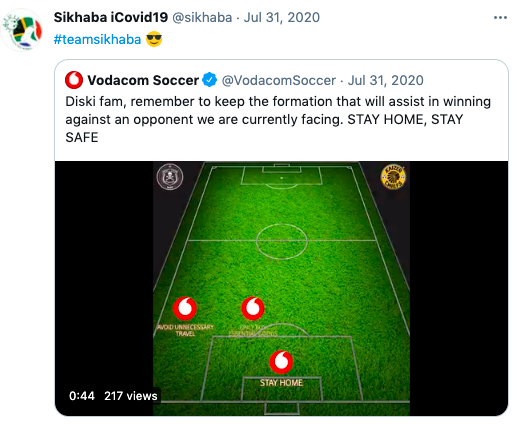
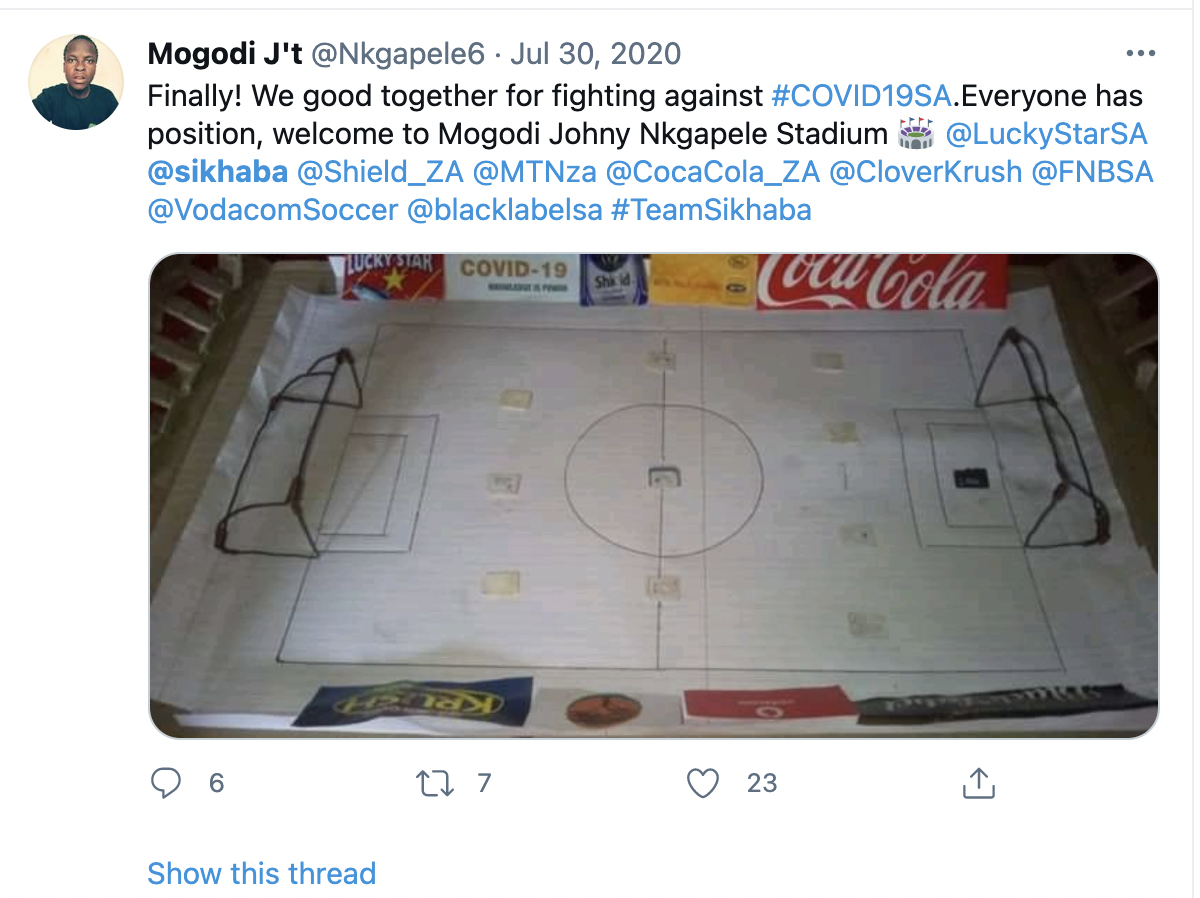
Through channeling people's passion for soccer and tapping into existing conversations, Sikhaba i-Covid19 and Treeshake were able to bring people together.
Over the course of the 3 days, 15.4 million people were reached on Twitter, 740,000 people on Facebook, with more than 45,000 people having interacted with the content across all platforms and 3,000 people having joined us in creating original posts in support of the campaign.
A major highlight was trending on Twitter nationally. This was especially exciting as Sikhaba was a brand new account with less than 10 followers at the start of the campaign.
The community spirit of the #TeamSikhaba was phenomenal. In just 3 days, thousands of people rallied together to fight COVID-19 in solidarity with one another. With the rapid growth of this community and the key voices that pulled through, we helped people feel less alone and scared. Widows, celebrities with COVID-19 and frontline workers reminded people that we are all in this together — the virus does not discriminate and neither should we. Battling an overall sense of fatigue around COVID-19 communications, the community came out stronger - inspired, hopeful and with renewed energy.












